Of course, mini LED backlit can be positioned as one of the main innovations of this year in LCD TVs. At CES 2021, virtually every industry leader presented their versions of this technology, including LG QNED Series, 3th generation TCL mini LED called OD-Zero, and Samsung Neo QLED TVs.
Local Dimming & Quantum Dot technologies
As known, Local Dimming radically increases the overall TV contrast by adjusting the backlit intensity in different frame areas, depending on its content.
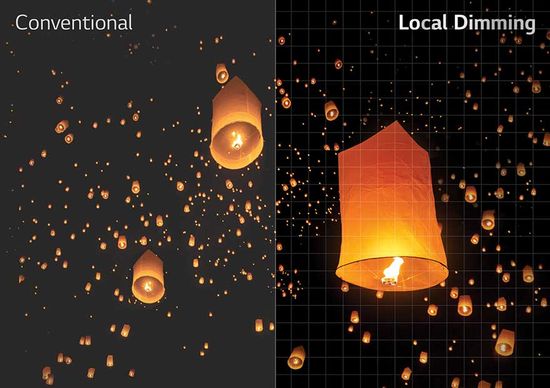
In turn, mini LED technology improves control accuracy by dramatically increasing the number of zones through the use of a huge number of miniature LEDs.
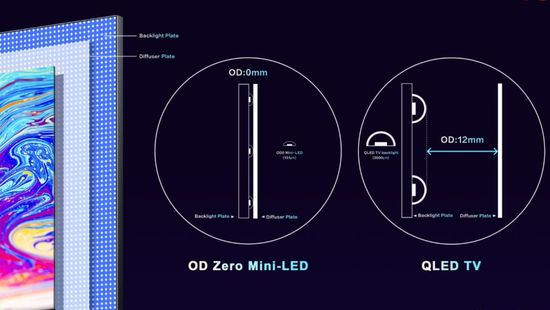
For example, flagship TCL X12 8K uses an unprecedented 96,000 LED chips grouped into 1920 local dimming zones.
In fact, the high contrast mini LED complements the Quantum Dot technology. As known, a few years ago, it radically expanded the color gamut and improved color accuracy in LCD TVs by improving the white quality for the backlit of RGB layer.
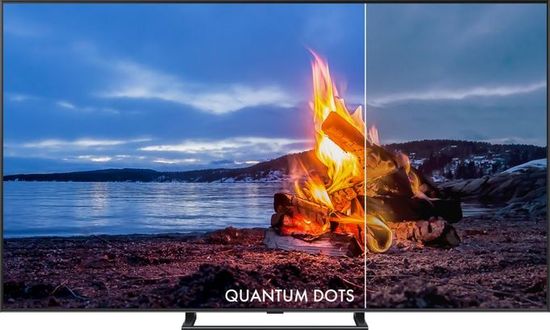
As a result, the market has actually formed a new segment of premium LCD TVs with Quantum Dot technology (color enhancement) and mini LED backlight (contrast enhancement). Their picture quality which has reached of level TVs with OLED panels. Unfortunately, their price has also changed, but not for the better for consumers.
This year, LG OLED & Samsung Neo QLED TVs first appeared in one price segment.
Since spring, the announced mini LED Samsung Neo & LG QNED have been in the spotlight of many experts. But volatile starting prices have significantly limited the objectivity of their comparison. Today this stage is over, sellers have already formed more or less stable prices and the analysis may be quite correct.
mini LED Samsung Neo QLED vs LG QNED
This list includes LG QNED90 & QNED85 series and Samsung Neo QLED QN90A & QN85A series. Both LG series have almost identical specs, but QNED85 uses 60Hz panel vs120Hz panel in QNED90, and is cheaper. Unfortunately, it’s not yet available.
Both Samsung series are already available. The flagship QNED90 series is brighter, significantly more contrasting, but more expensive.
Prices:
– LG QNED90 – $ 1,800 (65”) / $ 2,700 (75”) / $ 3,500 (86”);
– Samsung QN85A – $ 1,800 (65”) / $ 2,800 (75”) / $ 3,500 (85”);
– Samsung QN90A – $ 2,200 (65”) / $ 2,800 (75”) / $ 4,000 (85”).
Mini LED of LG QNED90 uses about 1000 local zones. Their number in Samsung Neo QLED QN90A reaches 792. Backlight QN85A has over 500 zones.
LG QNED90
Pros
– wide viewing angles;
– very good response time;
– good color gamut;
– new WebOS 6.1;
– flicker-free.
Cons
– imperfect uniformity in areas of similar colors;
– low native contrast.
Samsung Neo QN85A
Pros
– wide viewing angles with ADS panel;
– high reflection handling performance;
– excellent out-of-the-box pre-settings.
Cons
– blooming due to low native contrast;
– PWM may cause flickering in ‘Picture Clarity’ mode and in some modes.
Samsung Neo QN90A
Pros
– excellent native contrast ratio;
– incredible HDR peak brightness;
– great mini LED full-array local dimming (FALD) feature;
– high reflection handling performance;
– excellent out-of-the-box pre-settings;
– fairly wide viewing angles with ‘Ultra Viewing Angle’ technology.
Cons
– quite expensive;
– PWM may cause flickering in ‘Picture Clarity’ mode and in some modes.
Contrast
As known, LG QNED90 uses an ADS-type panel, which is actually an improved IPS matrix and provides an excellent viewing angles. Unfortunately it’s less bright vs VA panel and has a relatively low native contrast. However, the innovative mini LED backlight demonstrates high efficiency, increasing from 1,127: 1 (native contrast) to 6,018: 1 with local dimming.
For comparison, the local dimming mode of its competitor Samsung Neo QN85A with a similar ADS-type panel and mini LED backlight, increases 1,373: 1 native contrast only up to 1,956: 1.
In fact, the mini LED backlight in this series has the best efficiency today.
But of course it cannot compete with the Samsung Neo QN90A, which uses a bright VA panel with 3,510: 1 native contrast. The local dimming mode increases native contrast to an unprecedented 26,534: 1, which is very close to the virtually unlimited contrast of OLED panels.
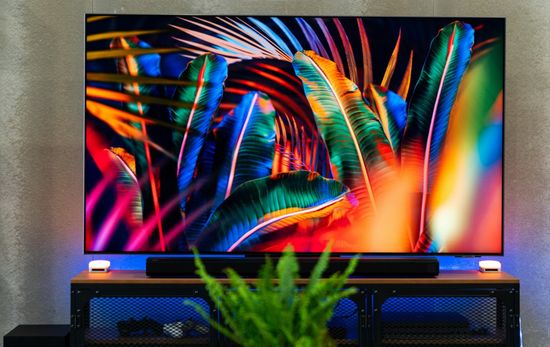
Brightness
SDR brightness of LG QNED90 ranges from 571 nits (cd / m²) for 100% window to 873 nits for 25% window. Of course, it easily eliminates glare even in a bright room.
Moreover, calibration increases brighness to more than 950 nits (25% window in ‘Vivid’ Picture Mode with the Color Temperature ‘Cold 50’), but of course at the expense of image accuracy.
HDR brightness varies from 677 nits for 100% window to almost 1050 nits for 25% window. This brightness is sufficient for even small highlights in almost any content. Moreover, TV gradually reduces peak brightness as it approaches maximum, keeping fine details even in very bright scenes.
Maximum brightness is achieved in the ‘Cinema’ HDR Picture Mode (Panel Brightness and Contrast – in max, LED Local Dimming – ‘High’, Color Temperature – ‘Warm 50’, other image processing — disabled).
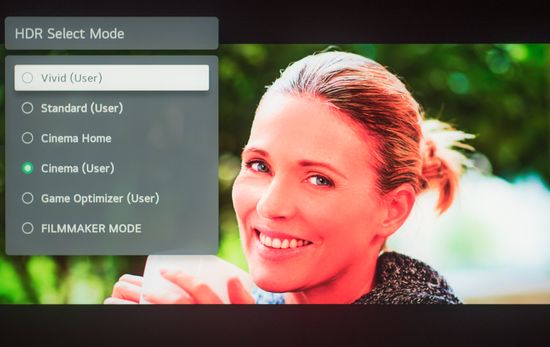
If HDR is too dark, ‘High’ in Auto Dynamic Contrast and ‘On’ in HDR Tone Mapping will slightly increase the brightness, but with the loss of fine details in bright scenes.
For comparison, similar specs of QN85A are:
– 620 nits for 100% window and 1140 nits for 25% window (SDR brightness);
– 670 nits for 100% window and 1240 nits for 25% window (HDR brightness).
Thus, even the QN85A with an ADS-type panel is marginally brighter vs LG QNED.
The VA panel brightness in the QN90A reaches 690 (100%) / 1450 (25%) nits for SDR, and 760 (100%) / 1630 (25%) nits for HDR. Compared to LG QNED90 (571/873 nits and 677/1050 nits), the difference is 20% for 100% window, and reaches almost 50% for 25% window.
Calibration
LG QNED90
Pre Calibration (Picture Mode – ‘Expert’, Color Temp Setting – ‘Warm 2’) / Post Calibration
– White Balance dE 2.78 (Good value< 3) / 0.27.
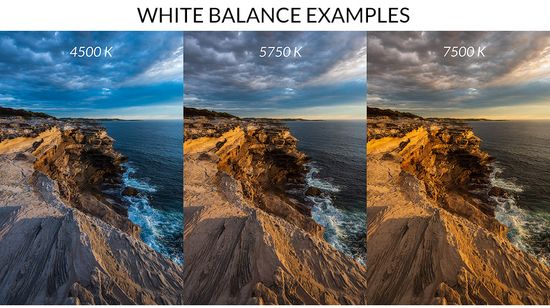
– Color dE 1.68 (< 3) / 0.77;
– Gamma 2.17 (2.1-2.3) / 2.20.
In fact, Gamma characterizes the image transitions from black to white, and affects all the grays in this range. For example, a low gamma has a shallower curve, so shadows will appear brighter.
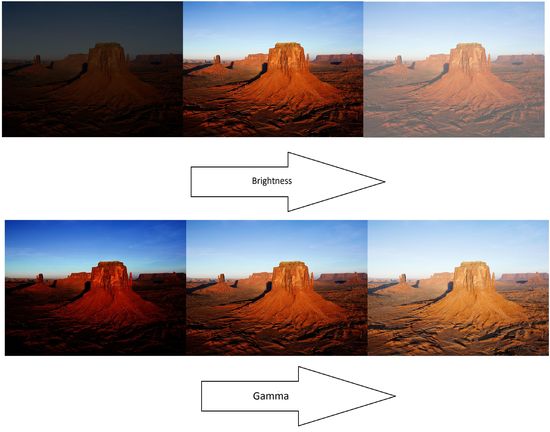
– Color Temperature 7,307 K (ideal is 6500K) / 6,757 K.
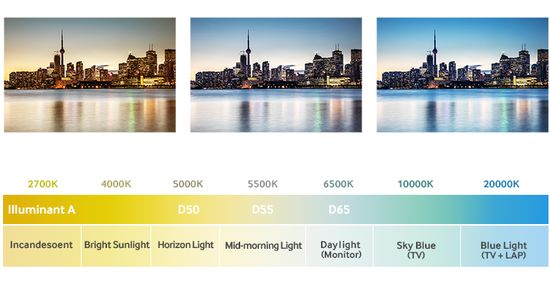
Pre setting ensures high accuracy, gamma is close to ideal 2.2, colors are excellent. Too high color temperature offsets the balance to blue, but calibration solves this problem.
In comparison, Samsung models demonstrate:
QN90A (Picture Mode – ‘Movie’ , Color Temp Setting – ‘Warm 2’)
– White Balance dE 0.85 / 0.24;
– Color dE 1.39 / 1.07;
– Gamma 2.20 / 2.20;
– Color Temperature 6,620 K / 6,529 K.
QN85A (Picture Mode – ‘Movie’ , Color Temp Setting – ‘Warm 2’)
– White Balance dE 1.23 / 0.18;
– Color dE 1.61 / 1.27;
– Gamma 2.21 / 2.20;
– Color Temperature 6,423 K / 6,532 K.
Traditionally for Samsung’s TVs, the QN90A / QN85A models demonstrate excellent out-of-the-box accuracy. Nevertheless, the calibration brings their settings to the ideal. Despite its excellent calibration, the LG QNED90 falls short of the Samsung near-perfect settings.
Reflections & Response Time
LG QNED90 has a semi-gloss screen finish and provides:
– total reflections (amount of reflected light in all directions) – 5.5%;
– indirect reflections (amount of reflected light without direct (mirror-like) reflections) – 1.6%;
– calculated direct reflections – 3.9%.
For comparison, similar specs of glossy screen finish in the Samsung QN90A / QN85A are:
– 1.7%, 0.9% & 0.8% / 1.3%, 0.1% & 1.2%.
This comparison once again demonstrates the advantage of glossy finish vs semi-glossy, which absorb more light. Thus, the flagship Samsung QN90A provides fantastic reflection handling performance. The QN85A also significantly outperforms the LG QNED, whose semi-gloss finish is poorly diffuses direct reflections from windows. Nevertheless, its high brightness copes with the most glare quite efficiently.
Response time includes 80% and 100% Response Time. The first is the duration of 80% transition one color of pixel to another, the second is 100% transition, respectively. It matters for display of fast movement.
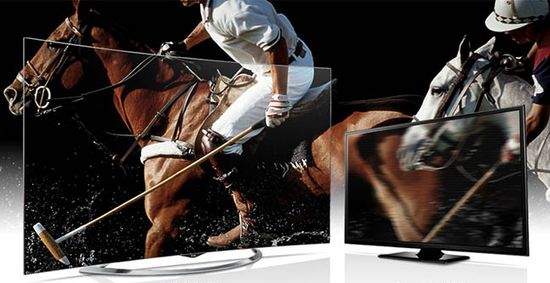
Today, a value up to 6 ms is considered a good for 80%, and up to 14 ms – for 100% Response Time.
LG QNED90 / Samsung QN90A / Samsung QN85A (80% & 100%):
3.4 & 13.8 ms / 3.3 & 8.9 ms / 5.2 & 10.5 ms.
In principle, all models demonstrate very good results, but Samsung QN90A wins. LG QNED90 almost instantly pares from bright to dark, but slows down in the opposite direction. All transitions on the Samsung QN90A are smooth and with minimal blur.
Other key features
Samsung QN90A uses ‘Ultra Viewing Angle’ technology, which provides acceptable viewing angles even for a VA panel. It uses two special layers that minimize leakage by focusing the light in the right direction and spreading it uniformly across the panel.
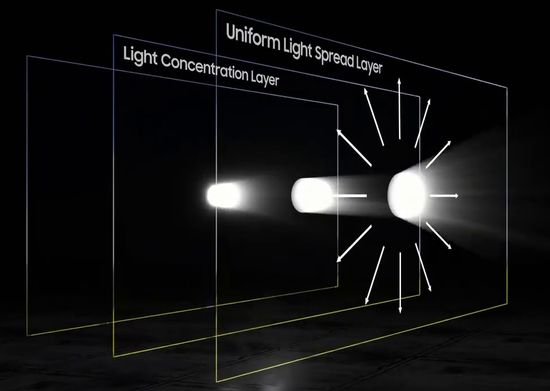
QN85A uses ADS panel with wide viewing angles.
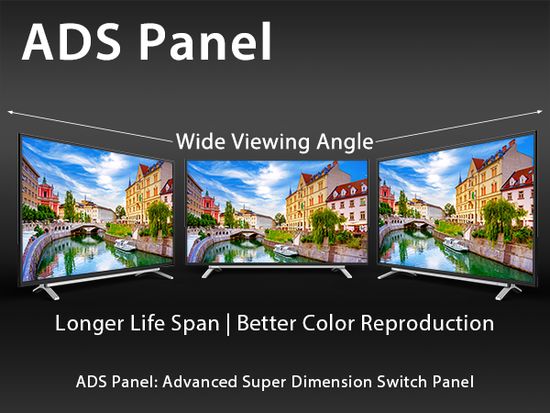
The 85 inch version comes with VA panel, but uses the ‘Ultra Viewing Angle’ layer to enlarge the viewing angles.
All TVs lag-free and distortion-free upscale 480p (DVD), 720p (cable box), and 1080p content. Of course, native 4k content is displayed perfectly.
All models support Wide Color Gamut.
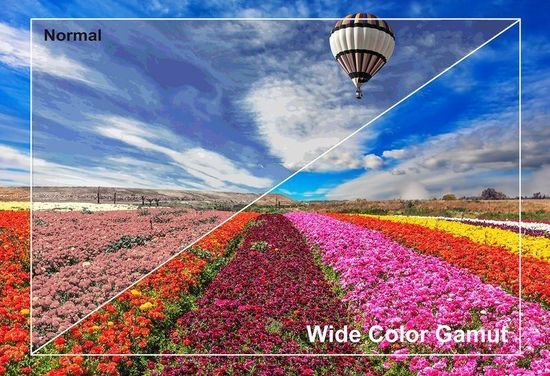
LG QNED90
DCI-P3 / Rec 2020 (xy & uv)
– 94.17% & 96.62% / 71.29% & 77.15%;
Samsung QN90A
– 95.05% & 95.52% / 70.74% & 76.49%;
Samsung QN85A
– 91.04% & 94.89% / 67.50% & 74.45%.
Today, DCI-P3> 90% is good value.
The LG QNED90 is excellent at displaying a wide color gamut, which directly affects HDR performance. The Samsung QN90A / QN85A are practically not inferior to the competitor, but formally their indicators are slightly lower.
The Samsung TVs use Pulse Width Modulation (PWM) to adjust brightness, which unfortunately comes with flickering. At 960Hz, the eye and brain cannot perceive it. But in some modes and when ‘Picture Clarity’ is turned on, the frequency is reduced to 120Hz and this unpleasant effect may appear. LG QNED90 does not use PWM and, accordingly, is completely flicker-free.
LG QNED90 uses WebOS 6.1, Samsung models – Tizen 6.0.
Conclusion
1. With identical specs and prices, the choice between Samsung QN85A and LG QNED90 depends on consumer confidence in these brands. The Samsung QN85A has better pre-settings ‘out of the box’ and a more efficient anti-glare glossy screen finish. LG QNED90 is completely flicker-free, has better response time, and its mini LED backlit uses about 1,000 local dimming zones, increasing native contrast to 6,018: 1. In comparison, the mini LED backlit in QN85A has about 500 zones, and increases native contrast only up to 1,956: 1. Probably, ideal pre-settings are more important for users without calibration experience, response time – for gamers, effective antiglare coating – when placing a TV in a sunny room, etc.
2. Samsung QN90A is significantly brighter and dramatically wins in contrast. Strictly speaking, 26.534: 1 contrast with local dimming can only be compared with OLED panels today. These pros are quite adequate for the 10-20% price difference for the 65″ and 85″ models.
For some unknown reason, 75-inch TVs have the same price tag around $ 2,800. In this case, the Samsung QN90A’s excellent brightness and contrast are decisive factors.
3. Mini LED technology is only at the beginning and has to prove its effectiveness vs FALD based on traditional LEDs with fewer zones.
Moreover, Hisense U9DG may intervene in their dispute with the innovative Dual Cell technology, which is an alternative to mini LED backlit. As known, it uses an additional monochromatic matrix in front of the RGB layer, which works as an LED backlit with 2,000,000 primitive local dimming zones for a matrix with 1080p resolution. Moreover, increasing the resolution of the black and white matrix to 4K will allow developers to increase their number to 8,000,000!
This video with Samsung QN90A.
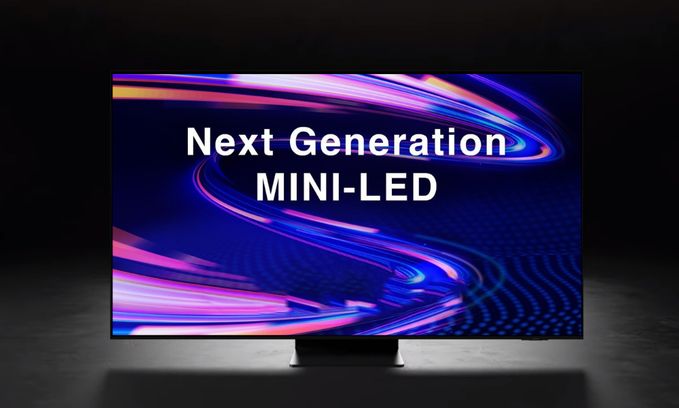
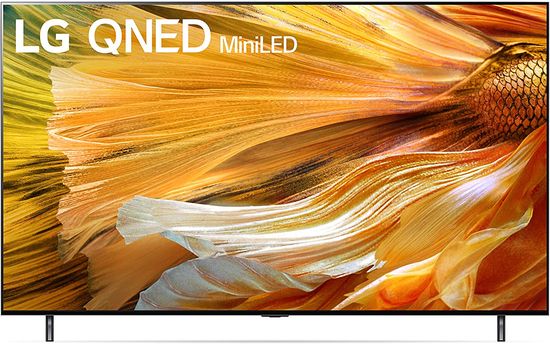
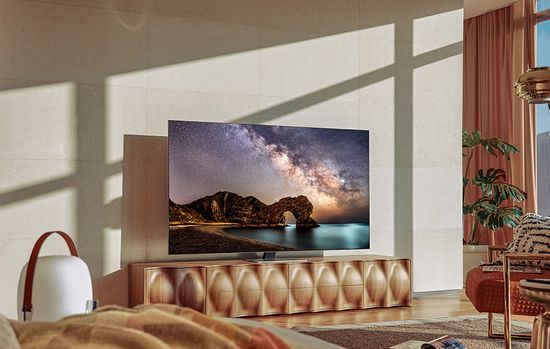
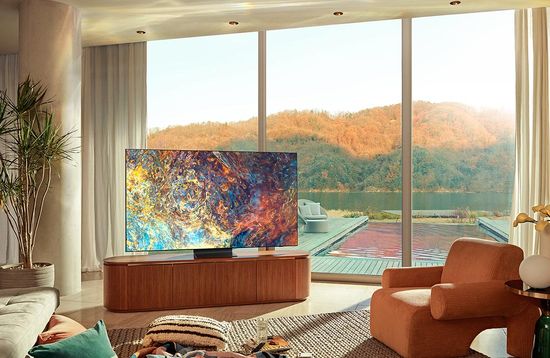
Pingback: Samsung Neo 4K QN85A vs QN90A Review - The Appliances Reviews
Pingback: Sony BRAVIA XR TVs with Cognitive Processor Review - The Appliances Reviews
Pingback: Sony A80J vs Sony A90J OLED TV Review - The Appliances Reviews
Pingback: Value for money in 8K miniLED TVs - Samsung Neo QLED vs LG QNED. Review - The Appliances Reviews
Pingback: Buying the best outdoor TV. Review - The Appliances Reviews
Pingback: Sony Master Series A95K QD-OLED 4K TV Review - The Appliances Reviews